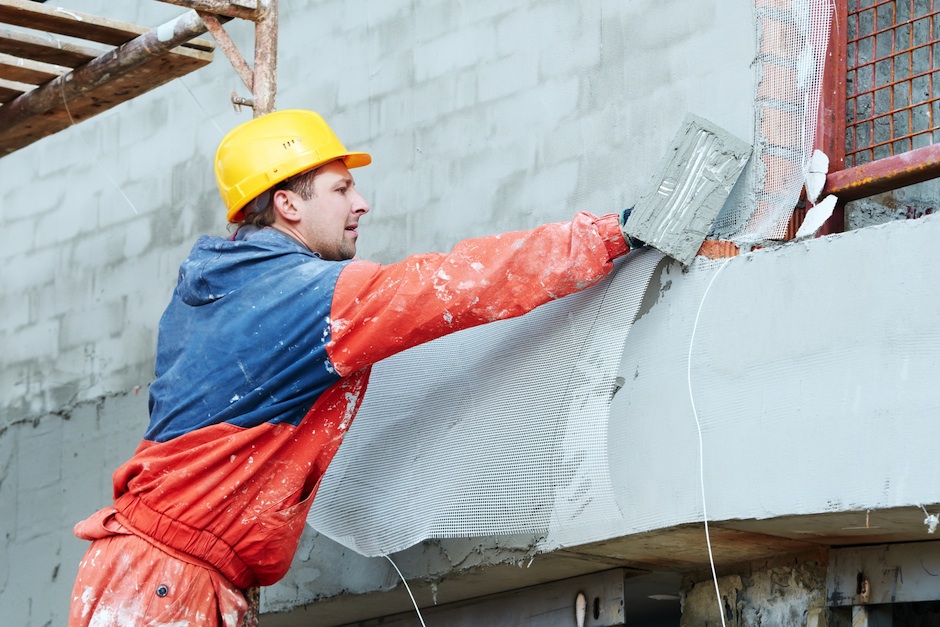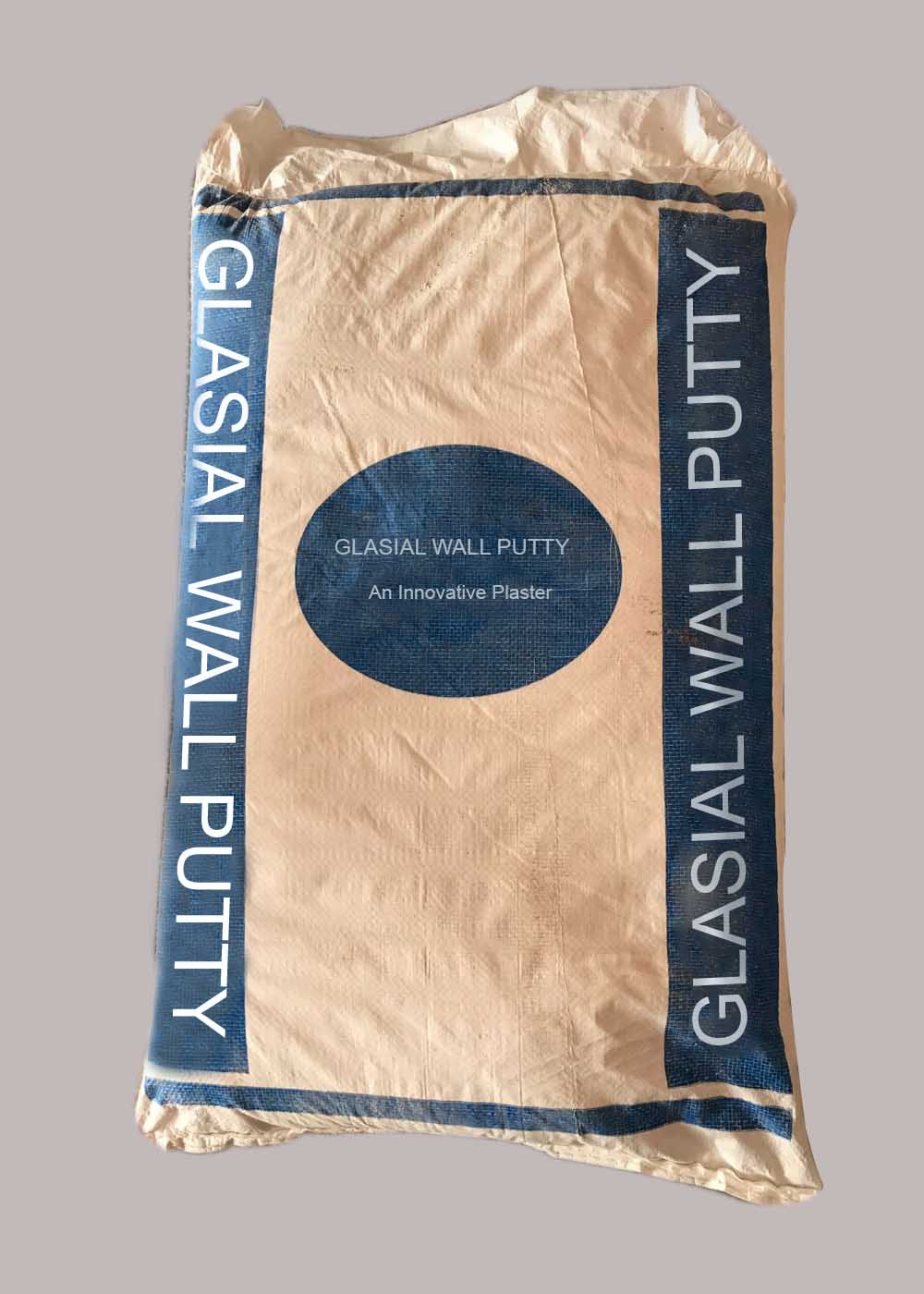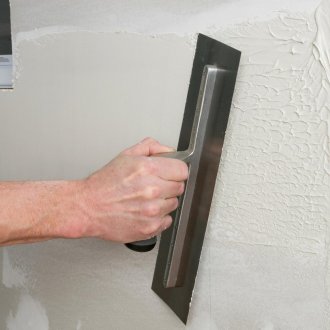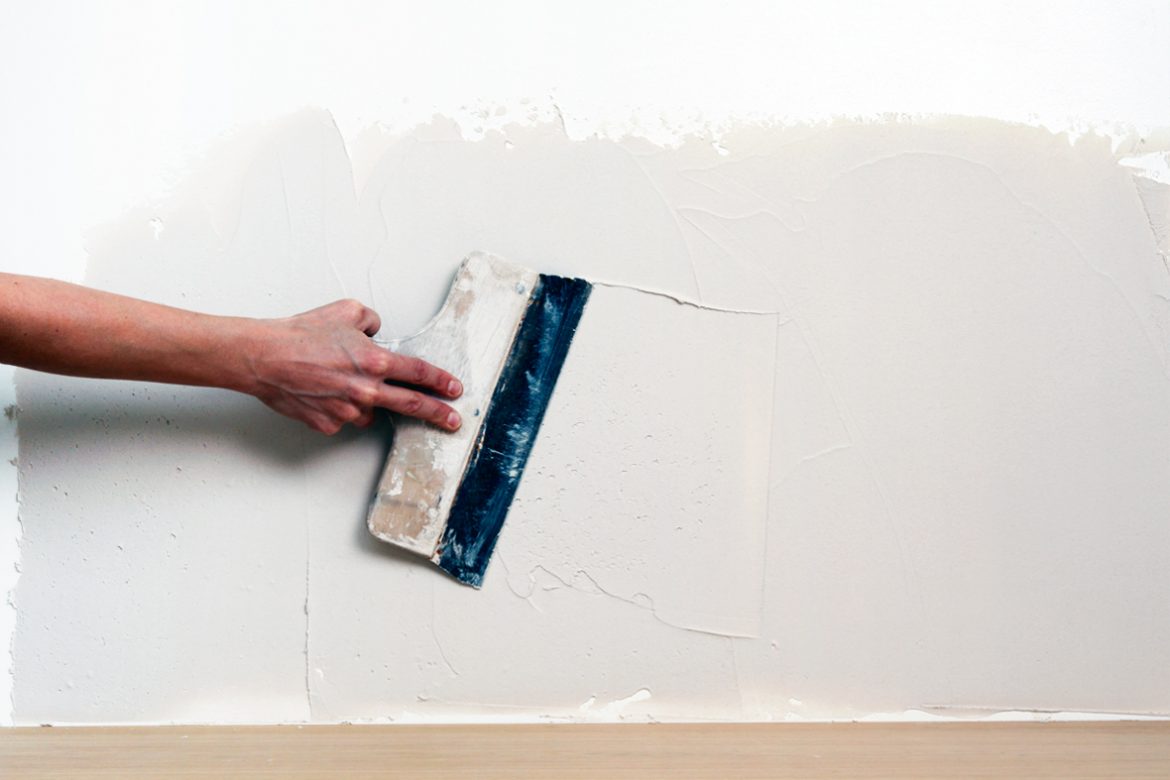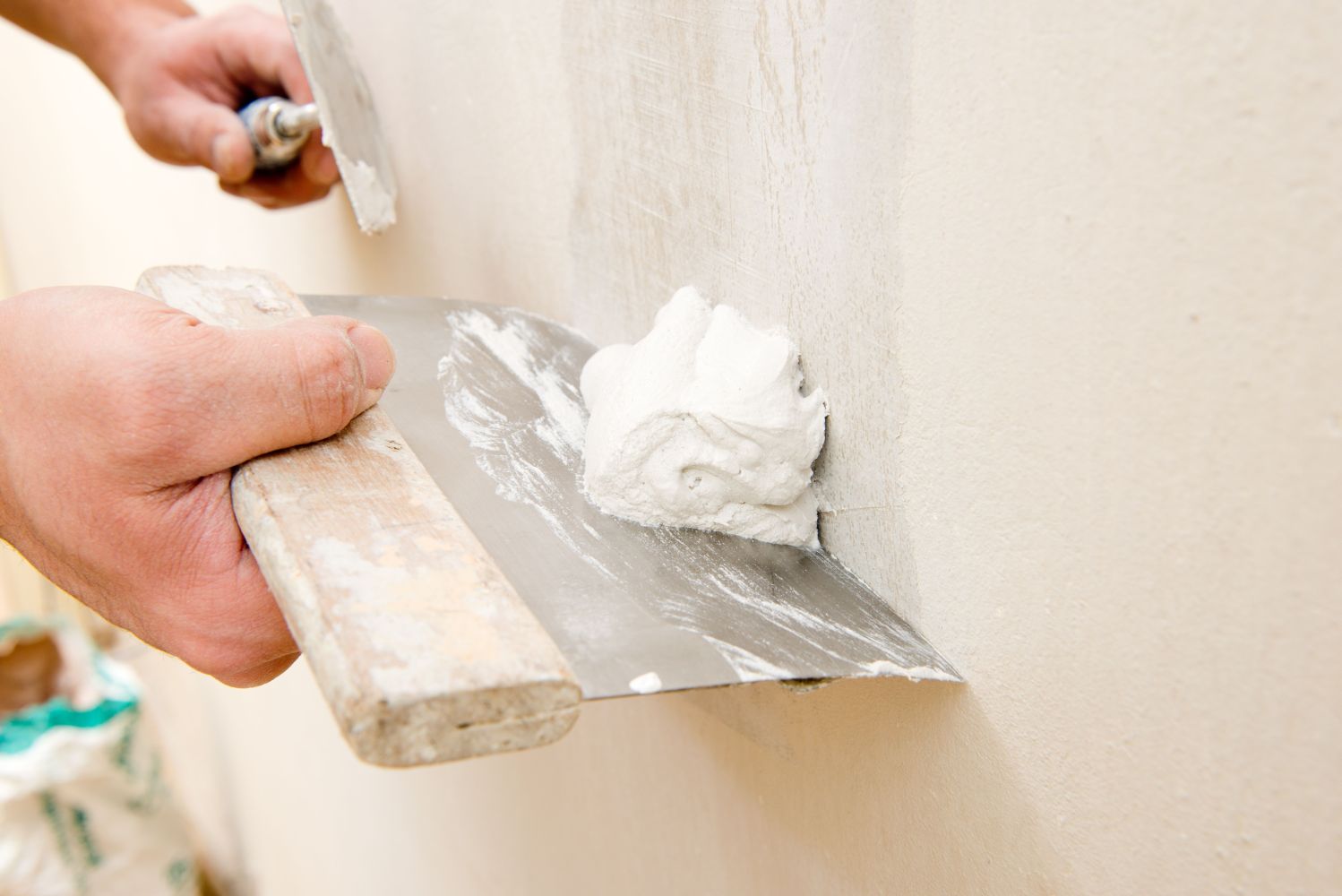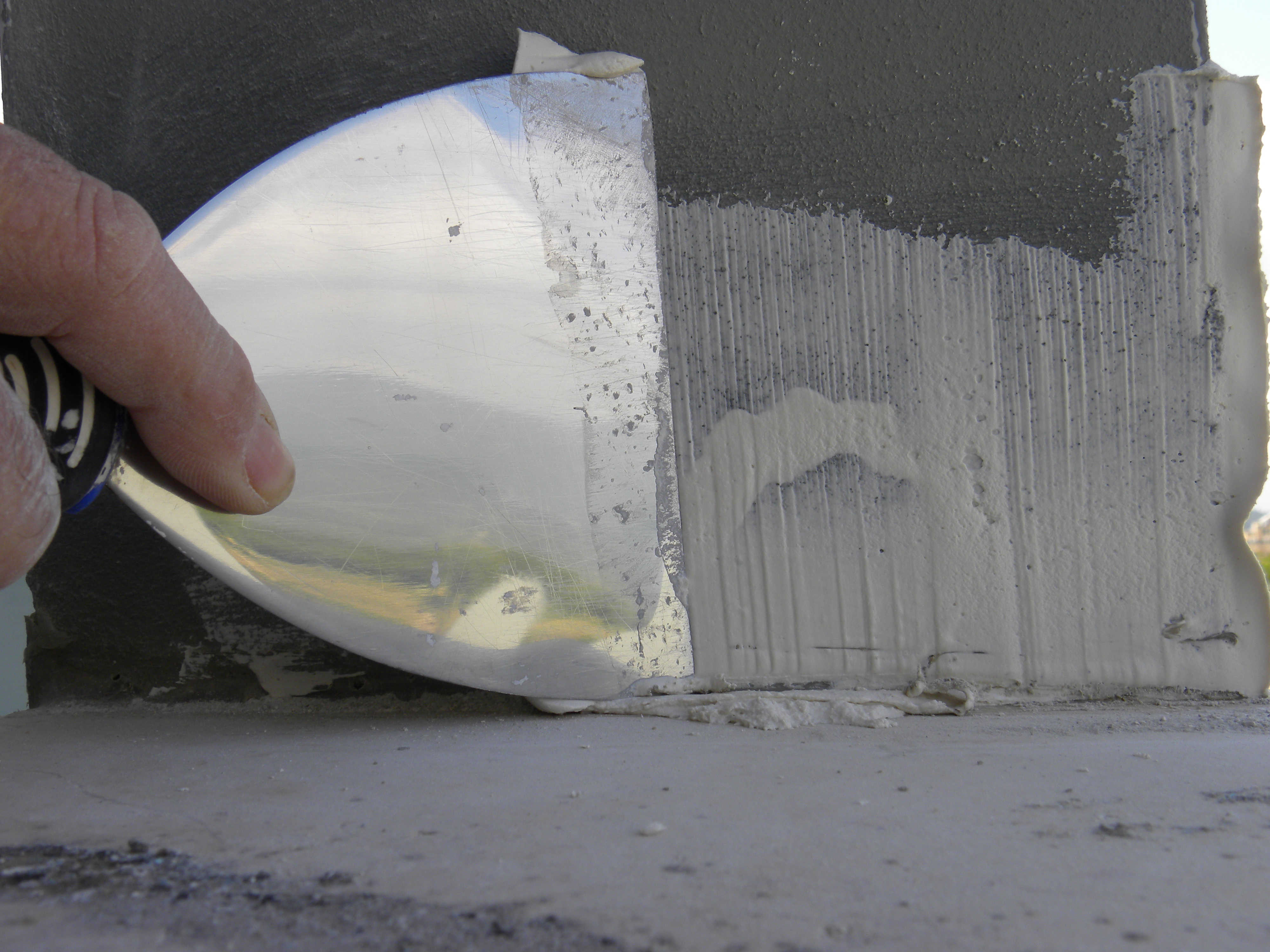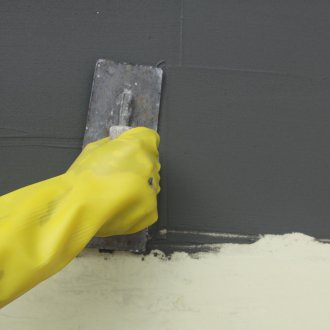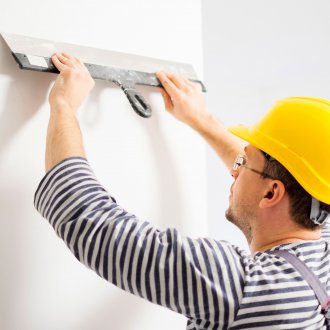Facade putty: the difficulties of working with the composition
Content
During the construction of the house, a decorative facade putty is used, which is necessary to align the walls before the finish coating, painting. The choice of such a building mixture must be taken seriously. Normal putty suitable for interior decoration cannot be used. For outdoor work, there is a special type of putty.
The main advantages of facade putty
The main qualities of the building mixture are not only its protective functions against various external adverse forms of exposure, leading to the destruction of surfaces, but also the creation of a beautiful facade design. External plaster is characterized by the following properties:
- Strength. The facade of the building is rarely exposed to mechanical stress. If for some reason the walls experience such loads, the plaster layer will protect it from destruction.
- Water resistance. This type of mortar does not change under the influence of moisture. Putty is a protective coating that prevents the destruction of walls by water.
- Vapor permeability. Exterior plaster is a breathable building material, that is, it lets oxygen and vapors pass out, thereby preserving the original surface structure of the wall of the building.
- Good heat and sound insulation. Exterior putty helps maintain heat in the home and reduce street noise.
- Resistance to climatic changes and sharp temperature differences. High-quality putty for facades is highly resistant to aggressive sunlight, various atmospheric precipitations, and even to radiation compounds. Facade plastering is also carried out under adverse climatic conditions.
- Easy to use. Plastering surfaces with putty can be carried out independently if there is little experience in construction work.
- Possibility of application for interior decoration.
- The embodiment of various design solutions and a large selection of colors. With the help of facade decorative putty you can realize any design ideas. A diverse color palette is obtained by adding colorings to the building mixture. You can create various patterns and textures, while correctly, correctly applying layers of material. The choice of color scheme and ornament depends on the design solution and coating technology.
- Cost. Compared with other finishing materials, plastering walls is more profitable. Unit price depends on the structure of the coating and its properties.
The listed characteristics are available for almost any decorative type of facade putty, but it is worth knowing that the degree of manifestation of some properties may differ from the type of the selected mixture and its constituent components.
Brief description of the main types of putty
Depending on the purpose, the facade putty for outdoor work is as follows:
- Starting. This type of putty is used for the lower finish (base layer) of the surface. The structure of the starting mixtures is coarse-grained. The thickness of the application of the starting layer of putty varies from 2-20 mm. These mixtures are very durable, easy to process.Due to these properties, it is often used to level the surface.
- The finish line. Such putty is used at the final stage of facade work, with the help of it the surface becomes flat and smooth. The structure of the final mixture is finely divided. The thickness of the putty layer is not more than 4 mm. If necessary, additional painting is carried out. Compared to the starting, the finishing putty is not so durable.
- Universal. This type of putty combines the properties of the two previous ones. For finishing the external facade, such putties are extremely rare.
For finishing the facade of the building, putties with a polymer (acrylic, latex) or cement base are used. Mixtures are described below:
- Cement (mineral) putty - based on cement. It has high strength, frost resistance, moisture resistance. Before use, it is necessary to prepare the solution according to the attached instructions in compliance with all proportions. After drying, the mortar does not form cracks. The color scheme of this species is limited, a mixture with a gray and white tint. To obtain the desired color of the facade, you must additionally paint. The composition of the starting cement facade putty includes crushed sand. The final form of the mixture includes ground quartz sand, finely ground limestone and microcalcite. Unlike putties with a polymer base, the price of cement is much lower.
- Latex putty - made on the basis of latex. There are finishing and leveling. Latex putty is used both for interior and exterior decoration. Available in the form of finished pastes without chemical smell. The main advantages are durability, moisture resistance and strength, and the disadvantage is the high cost per unit of goods.
- Acrylic putty - this type of mixture can be used with any finish. Mixtures are available in finished form. Additional dilution with water is not necessary. Thanks to the main component - acrylic, such putties are frost-resistant, elastic, moisture-proof, reliable and protect the surface from fungal infections. Apply an acrylic facade mixture to the surface with a thin layer (1-3 mm). The disadvantages include high material consumption and the need for grinding work in a protective mask.
The last two types of putty are more modern in relation to the first. The special components included in the composition improve the properties of building mixtures.
For plastering the facade, silicone and silicate putty are also used. Silicone mortar is a versatile material that protects the surface from all types of precipitation. Silicone prevents the development of harmful microorganisms and fungal infections on the walls, and also contributes to the long-term preservation of the presentable appearance of the facade. The main advantage of silicone plaster is a large variety of color palette and elasticity. Silicate putty is vapor permeable, suitable for surface finishing from aerated concrete. This mixture is elastic, easy to apply, resistant to contamination.
The technology of applying facade putty
Apply facade putty in only two ways:
- mechanical;
- tame.
In the first case, the mortar is applied to the surface with a special device under high pressure. This method has drawbacks: uneven application of plaster layers and high requirements for the finished mixture, so the manual method is more often chosen.
Before applying putty, it is necessary to clean the surface of dust particles, dirt, grease stains. To prevent the development of fungus and the adhesion of the layers, it is necessary to treat the walls with a special solution.
If a ready-made mixture is used, then before application it must be thoroughly mixed, if dry is chosen, then cook according to the instructions.The prepared facade putty can be used for three hours. Puttying is carried out as follows: cracks of the cavity are smeared, then the surface is leveled. If the building mixture is applied in several layers, then each layer must be primed.
The choice of facade putty
High demands are always placed on decorative putties for the facade. The main criterion for their choice is resistance to various climatic conditions. Choosing a facade putty, carefully examine its filler (its fraction) in the material and technical characteristics. The evenness of the treated walls will depend on this. Layers of plaster will lie smoother if it is smaller. Cement putties have a large granular fraction, but, despite this, they are more in demand. Ready pasty mixtures have the best properties.
High-quality facade putty should meet the following requirements:
- grasp quickly;
- do not crack;
- be strong and ductile, that is, for a long time to maintain its "vitality";
- be easy to handle;
- the possibility of combining with the used paints and varnishes.
Decorative facade putty for a long time remains the finishing material of residential buildings and houses for various purposes. With its help, you can realize your ideas by applying various shades and ornament. A wide range of facade putties is on sale, thanks to which everyone will be able to choose the right mixture.




